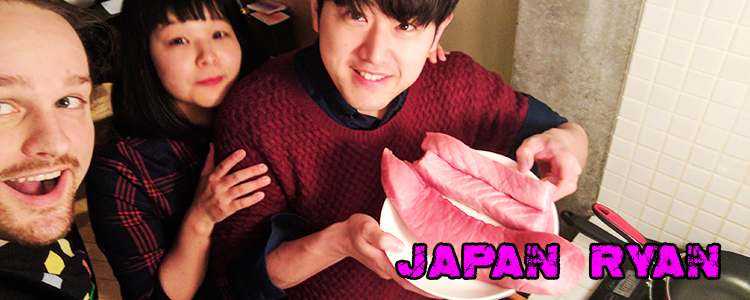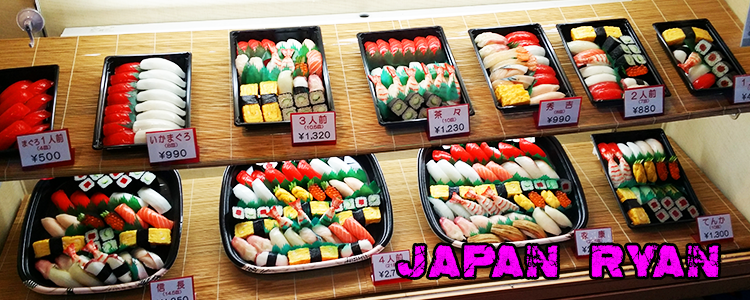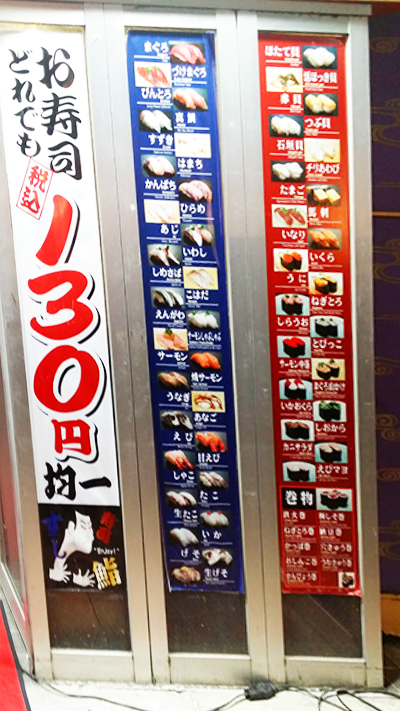Are you looking to eat sushi in Japan? Google Maps is your friend! But don’t make the mistake I did of trying to search for my favorite foods in romaji, you will get far fewer results and they will never be the quality you are looking for.
Search for this: 寿司屋
That means “sushi-ya” or sushi restaurant. You’ll find far more options than trying to search for the words in English or even for “sushi resutoran”.
Where to Eat Sushi in Japan
Sushi is the dish Japan is arguably most famous for. But should you try to find a highly trained sushi chef yourself to give you a private demonstration, or can you just hop into a taxi to the nearest place?
Going to the Sushi-Go-Round
Kaitenzushi, or the sushi-go-round, is a one-of-a-kind experience in Japan.

These sushi restaurants are arguably the best way to get sushi in Japan because the conveyer system convenience helps to keep prices low, making them a great bang for your buck. Prices are color-coded based on the color of the plate. Some plates are just around $1 each, while something fancier like eel or ootoro may be $8.
Having a sushi party with Friends.

My friend is a semi-world-famous sushi-chef. He hosted for us a marvelous sushi party using delicious fish caught that day. He was likely able to get a discount due to his sushi chef connections too. We had a marvelous time where a trained chef would cut the sushi for us, and we got to roll our own rice and press the fish on top. It was wonderful, and completed with fresh wasabi and ginger too.
How much does sushi cost?
Sushi prices can vary widely by the shop and by the location.

Most street-level sushi shops around the major Tokyo metropolis all have fairly similar pricing. Usually this is about $1-$2 per plate of sushi. The prices are always advertised in the window, along with the varieties they offer.
Be warned: if the prices are not advertised, they will be higher.
The real trick is in the difference in quality and varieties of sushi you can receive. One sushi shop may charge 130 yen ($1.14 USD) for a plate, but you will receive a really thin piece of fish on rice, whereas another shop may charge 130 yen but you’ll get a much bigger piece. This is how shops can appear competitive, but some 寿司屋 sushi-ya are better than others.
Prices in Osaka and other major cities are similar, and sometimes a little cheaper than Tokyo, because Tokyo is on-average 5-10% more expensive than everywhere else in Japan due to high real estate prices.
If you wander into a sushi shop without prices listed then the prices can vary wildly. It could be anywhere from $30 to $100 for a sushi meal, depending heavily if you have your own private chef for the session.

How to Google for Sushi in Japan
You absolutely must use kanji. Just open your maps app and copy-paste the word for sushi-restaurant.
寿司屋
Sushi-ya means sushi restaurant. If you try to search “sushi restaurant” Google right now doesn’t find you the same results, which is interesting to note that they don’t try to auto-translate it for you and then search. Perhaps in the future this is an innovation they will have.
When is the best time to eat sushi in Japan?
There really isn’t a best time to eat sushi in Japan because fish are brought into the country every single morning from all over the ocean, and there are smaller, lighter deliveries for bigger shops throughout the day. Most of the sushi you will eat in a large city like Tokyo will be incredibly fresh no matter the time of day nor time of year.
There are a few exceptions for specialty items. For example, you should not eat ark shell during the summer, because they spawn in the spring they are best in winter.
Summer: Horse Mackerel (not regular Mackerel), Octopus, Anago Eel, Sea Urchin
Winter: Shrimp, Scallop, Engawa flatfish, Tai Sea Bream Red Snapper, Maguro Tuna
What makes for a good sushi chef?
You don’t really need to look for a great sushi chef in the bigger cities of Japan like Tokyo and Osaka, because rarely will any place disappoint you. If you are served pieces that are too small or fish that is not good quality you can simply pay the o-kai-ke (bill) and leave for another place down the block.
Sushi chef training is an intense process requiring long hours. Many chefs have to be apprentices for several years before they are allowed to do the more expensive fish. Training can include doing everything from making rice to washing dishes, and hopefully getting to make sushi from less expensive ingredients like the kappa-maki cucumber roll.
However sushi has become relatively formulaic, and with the prominence of sushi-go-rounds, younger chefs are getting the chance to make more and more nigiri themselves.
How to eat sushi correctly.
Step 1: Pick up the sushi. You can use chopsticks or your fingers, but it’s rare to see people use their fingers in Tokyo.
Step 2: Dip the fish part of the sushi in a little soy sauce. Do not dip the rice because it will fall apart.
Step 3: Put it in your mouth with the fish touching your tongue before anything else (upside down).
You can use wasabi and soy sauce to taste, but be warned there is etiquette based on where you are eating.
How to eat sushi at the sushi-go-round.
However you want. No one is watching and no one cares. It’s the fast-food version of sushi, but it’s still amazing and delicious.
How to eat sushi in front of a sushi chef.
It’s polite to use less wasabi and less soy sauce, because the chef has likely selected higher quality cuts of fish for you and you should taste them uninhibited.
What next?
My name is Ryan and I love Japan! Learn some Japanese words or start planning your trip.